LSU's "AI in Action" Symposium Highlights Louisiana's Leap into the Future of Artificial Intelligence
March 06, 2025
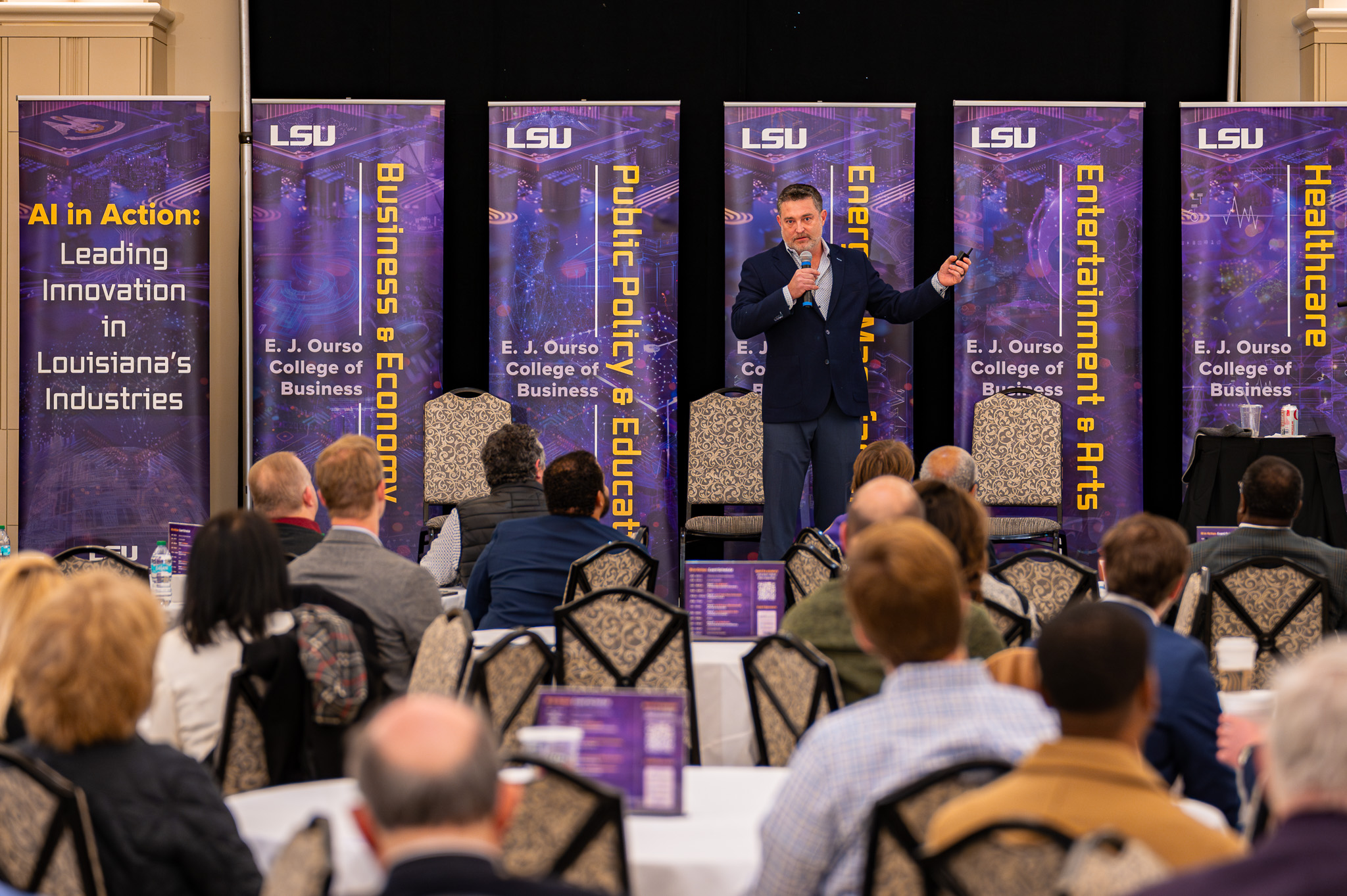
Darren Haas delivers his keynote address at the AI in Action Symposium on February 21, 2025.
BATON ROUGE – The LSU E. J. Ourso College of Business recently hosted "AI in Action: Leading in Louisiana Industries," a symposium exploring the transformative potential of artificial intelligence (AI) across key sectors of the Louisiana economy. Held on February 21, 2025, at the Lod Cook Hotel & Conference Center, the event brought together industry leaders, policymakers, academics, and entrepreneurs to discuss the opportunities, challenges, and ethical considerations of integrating AI into Louisiana's future.
The symposium kicked off with a keynote address from AI pioneer Darren Haas, co-founder of Siri and former technology leader at GE, Amazon Web Services, and Apple. Haas shared his personal journey in the field, emphasizing the long-term nature of AI development and the different challenges machine learning and AI technology was deployed to solve at each company. "Innovation isn't about technology," Haas said during his presentation. "It's about who we are building it for ... now AI is here. That's why we're here. You all have an opportunity to go and take that to the next frontier."
Following Haas's keynote, the symposium moved into a series of themed panel discussions covering a wide array of industries and constituencies, ranging from business and public policymaking, to manufacturing, entertainment, and healthcare. Each panel was comprised of industry leaders from throughout Louisiana and moderated by an LSU expert.
Transforming Louisiana’s Economy
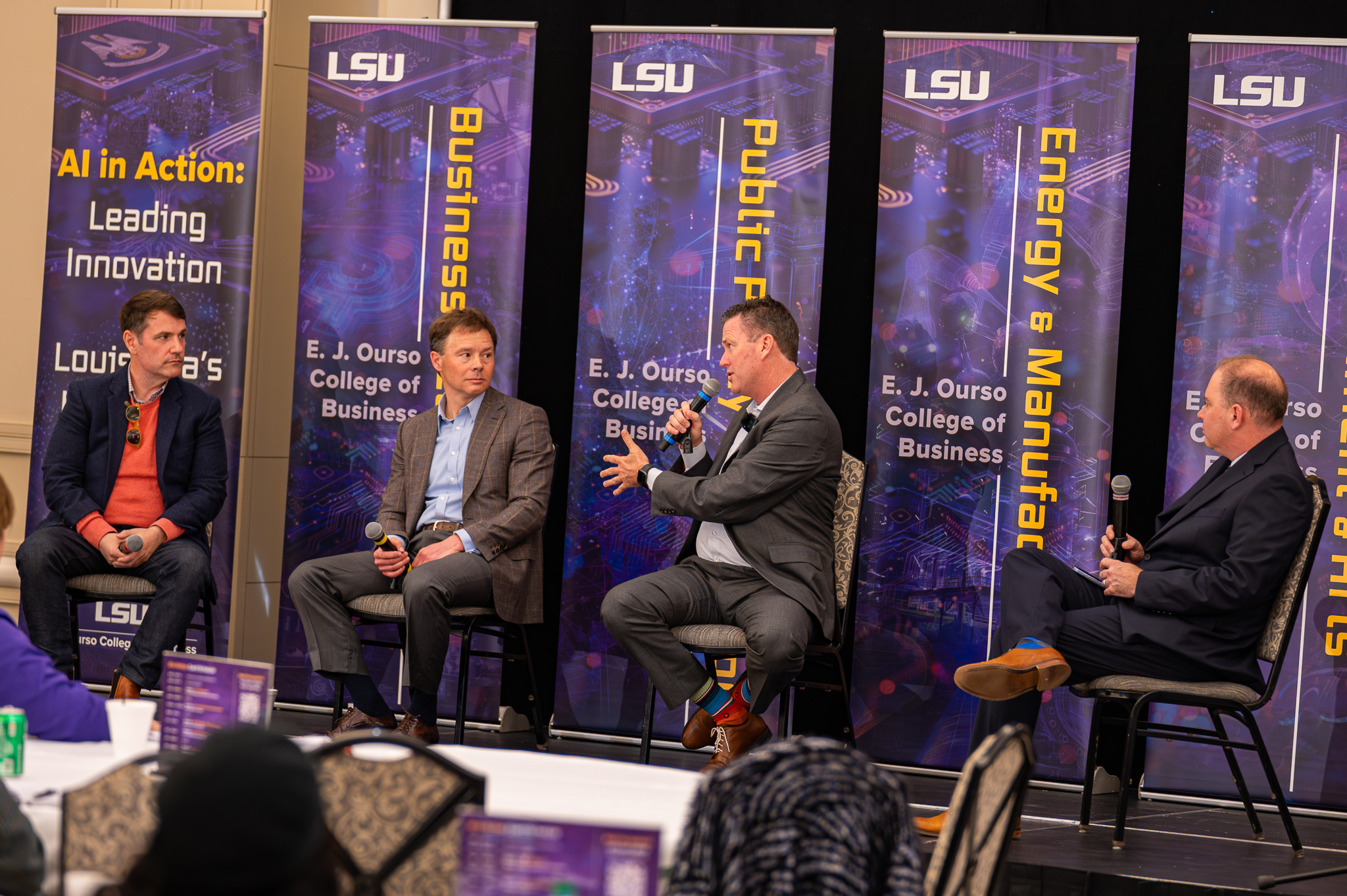
The first panel, focusing on AI and Business, featured panelists Henry Hays (DisruptREADY), Jude Melville (b1BANK), and Josh Fleig (Louisiana Economic Development), with Andrew Schwarz (LSU E. J. Ourso College of Business) serving as moderator.
From the very beginning of the conversation, the panel underlined that AI is not just a future trend, but a present reality that businesses need to address urgently to stay competitive, with Hays emphasizing: "If you don't have a strategy ... the line is forming. You [should] assume that your competitors in your business do have a strategy. And so the longer you wait, the less choice you will have."
Beyond urgency, another key takeaway was the necessity of upskilling and workforce development, as well as remembering the tens of thousands of small businesses in Louisiana that, given the right support, could leverage the technology to great effect. "[How] do we use these dollars to build a network," asked Fleig. "To build ... an army of integrators and service providers and people that can work in the communities to upgrade small businesses so that they can leverage artificial intelligence in their company to just be more productive."
In closing, Professor Schwarz observed that an intricate balance between government, education systems, and the private sector was forming, and the panelists agreed such a balance would be necessary for Louisiana to navigate this technological revolution. "What's really interesting about this panel and about this group is you have university, government, and the private sector all coming together and, to me, that bears out a very good promise of opportunity for the future," he remarked.
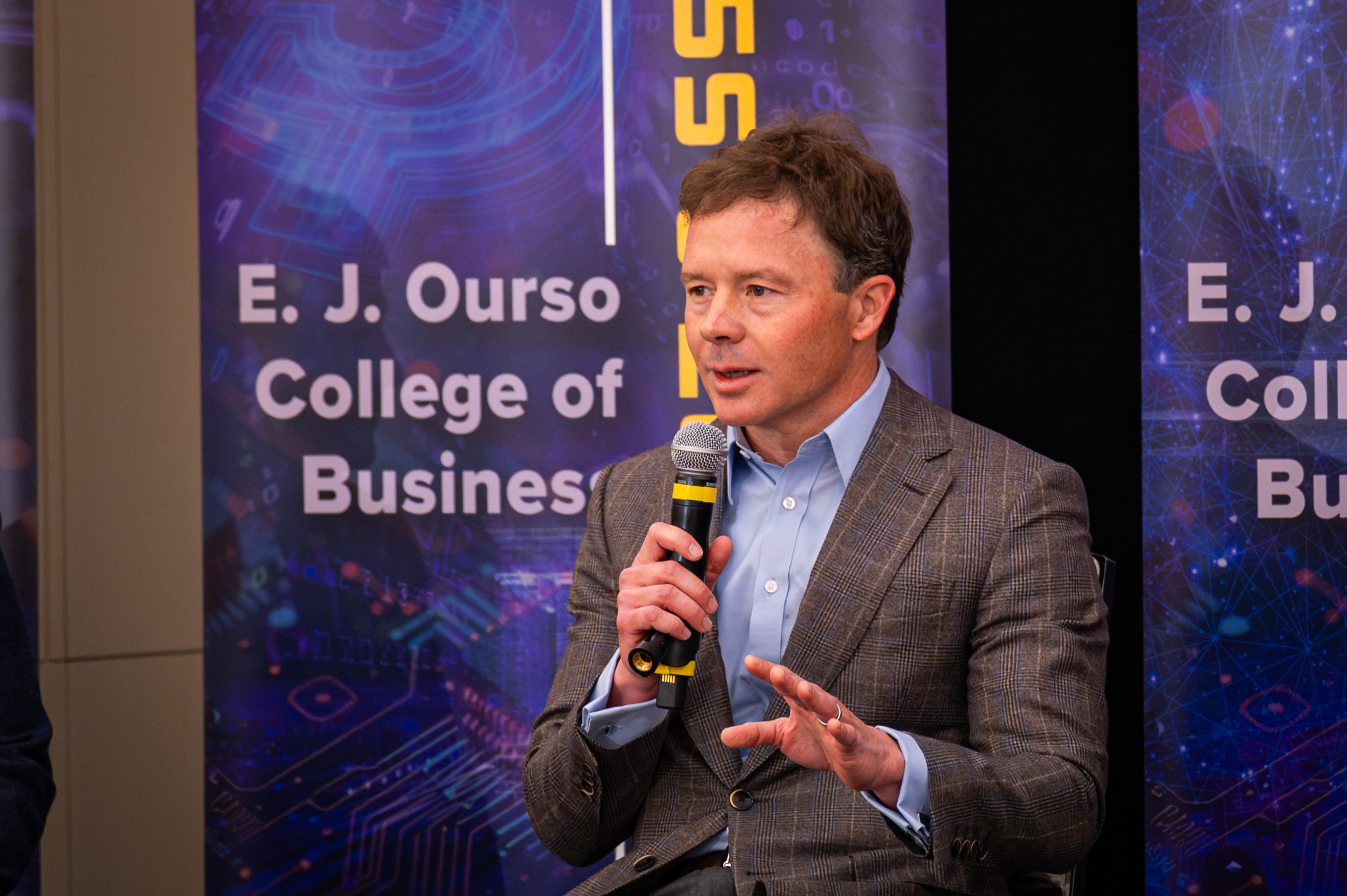
"We might be entering an age in which CEOs don't brag about the size of their company but they brag about what they can do per person, which is a pretty exciting place to be."
Jude Melville
Chairman, President & CEO
Business First Bancshares, Inc. and b1BANK
Shaping the Future of Education & Policy
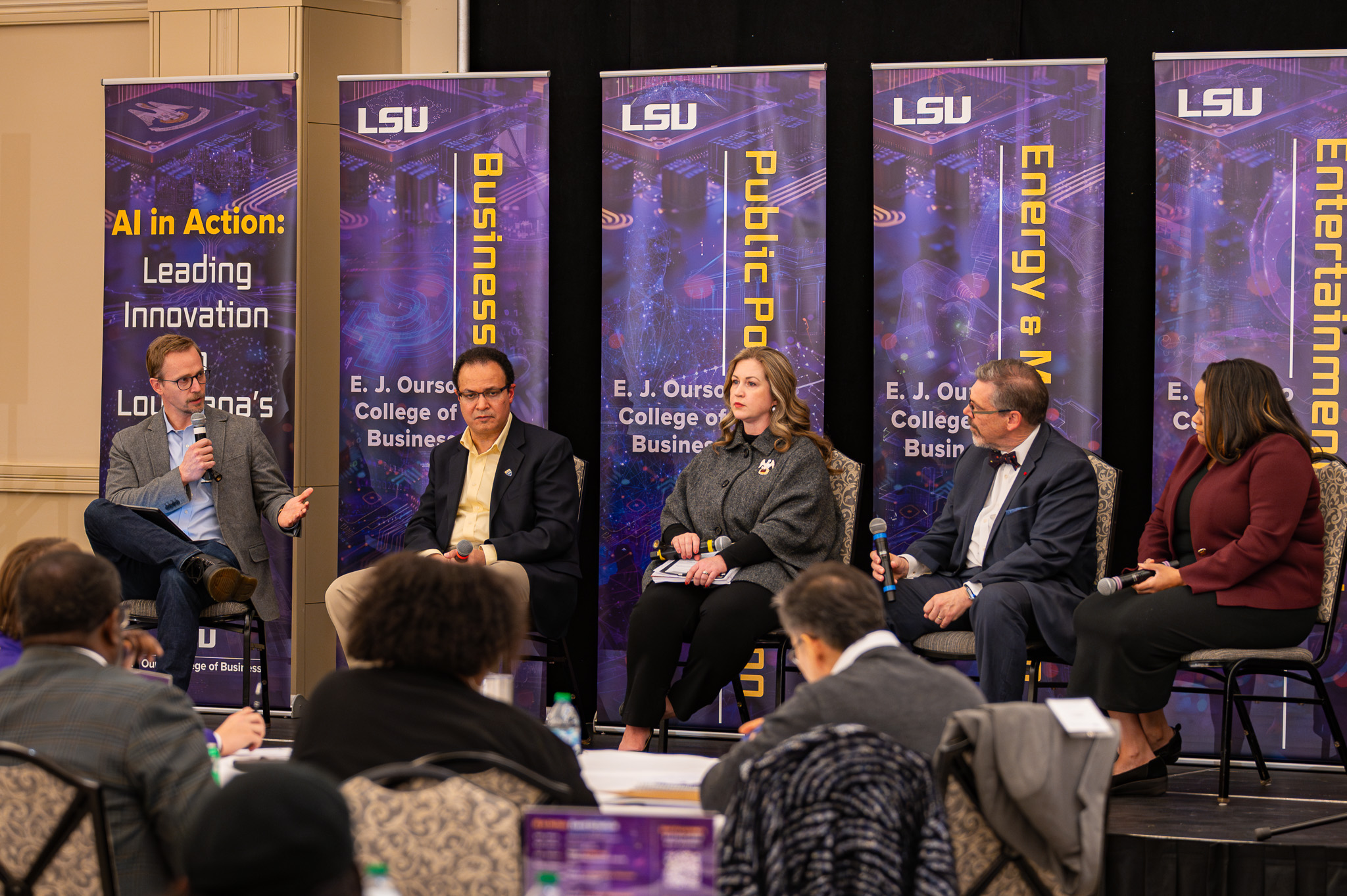
The day's second panel, focusing on AI's effects on public policy and education, welcomed Mostafa Elseifi (LSU College of Engineering), Erin Bendily (Pelican Institute), Tristan Denley (Louisiana Board of Regents), and Keena Arbuthnot (LSU System), with Roy Heidelberg (LSU E. J. Ourso College of Business) serving as moderator.
Early discussion revolved around adaptation of educational credentials and workforce skillsets, building on a theme from the first panel, with Denley observing that "Whenever you hear somebody say, 'AI is going to take your job,' no, actually, somebody who understands how to use AI is going to take your job." The panelists agreed on the necessity of aligning educational programs and skills with the evolving demands of an AI-integrated workforce, emphasizing the importance of learning how to use AI rather than fearing job replacement by AI. "If we want ... 60% of our students to be in the workforce, then we have to make sure that [they] have the skills and technological expertise to be part of this kind of ecosystem," added Arbuthnot.
The ethical dilemmas and regulatory challenges posed by AI also took center stage. Professor Elseifi drew on his experience as a faculty member to highlight concerns about AI being used as a full substitute for knowledge and understanding: "Me, as a professor, and dealing with students, I think we have to be careful ... if [the students] don't think about the problem but they give me [an AI-generated solution] ... they don't know what happened. They did not learn. And this is something that is very dangerous."
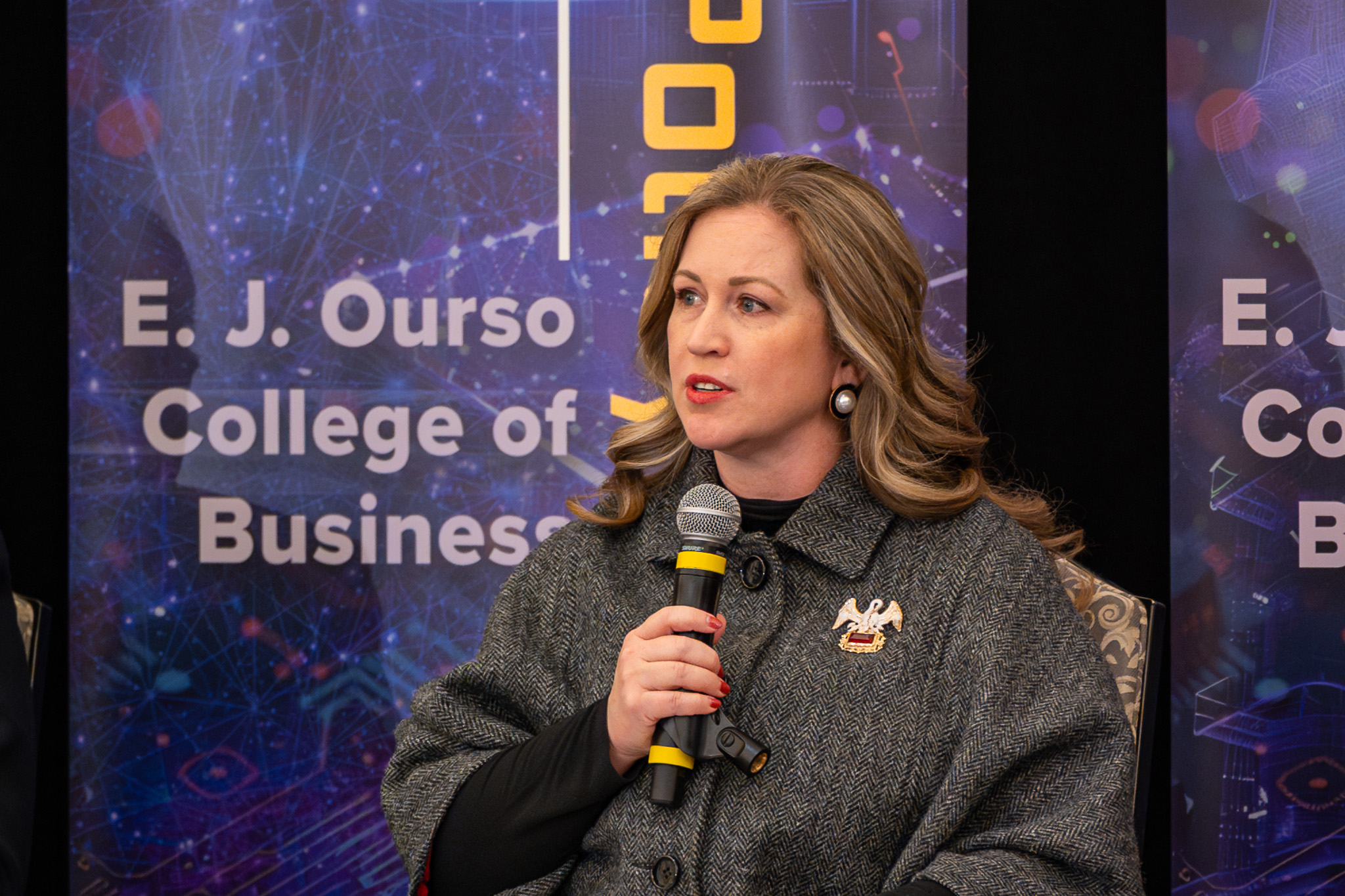
"Policymakers have an obligation, particularly in public schools, that they provide the [resources] needed to make sure our students aren't left behind, and ultimately that our state is not left behind."
Erin Bendily
Senior Vice President
Pelican Institute for Public Policy
Boosting Productivity
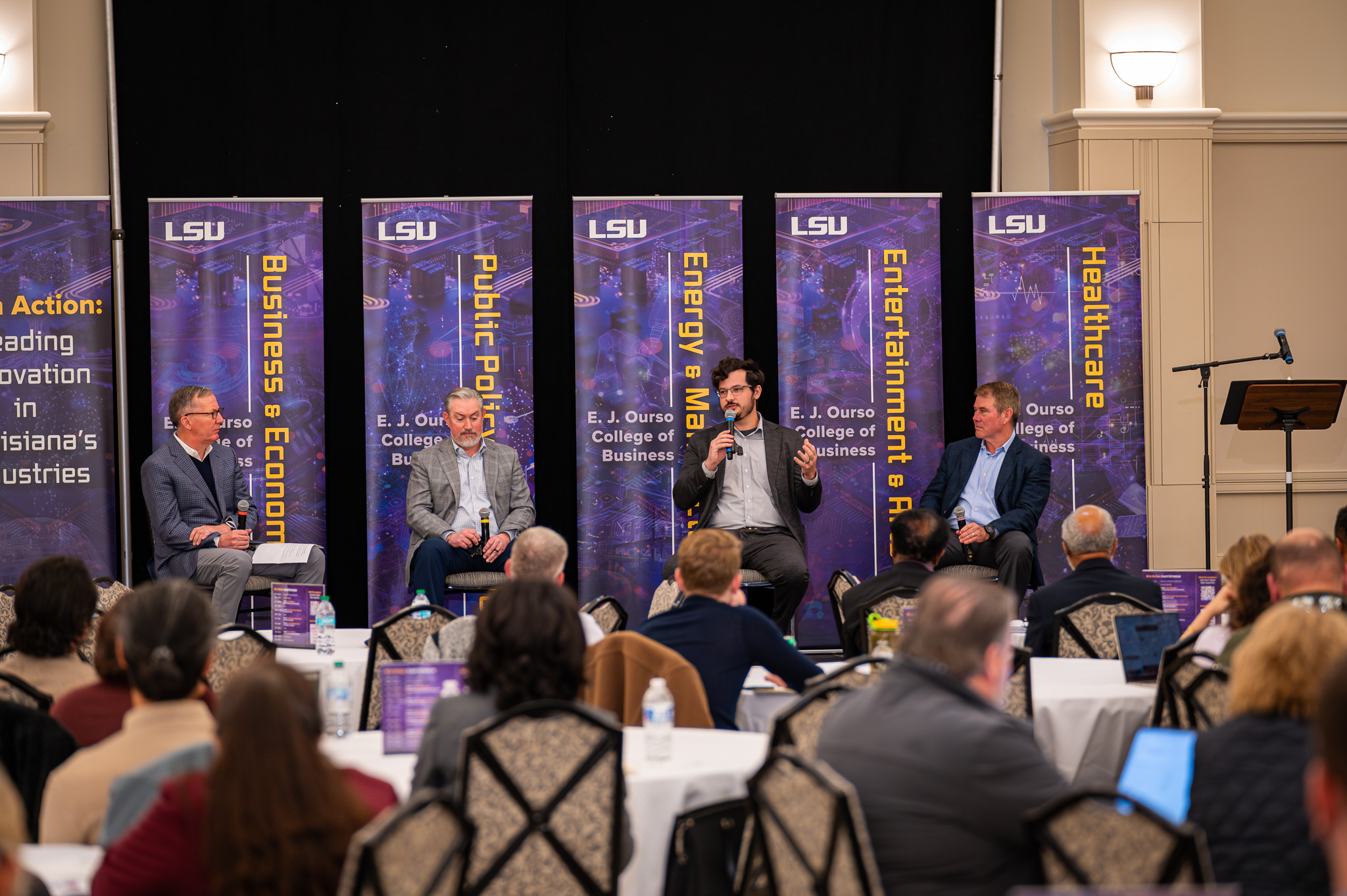
The third panel took a deep dive into AI's effects on energy and manufacturing through the experiences of Brent Wallace (Dow Inc.), James Ghawaly (LSU College of Engineering), and Roy O. Martin III (Martin Sustainable Resources, L.L.C.), with Brad Ives (LSU Institute for Energy Innovation) serving as moderator.
Productivity and safety improvements emerged as an early highlight. Roy Martin noted how AI-driven process optimizations resulted in a nearly 10% improvement in production rates at his oriented strand board plant, with a secondary benefit being safer operations. "The other thing we've seen is less downtime from upset conditions, because when the plant's running well, it's not going up and down, you don't get plug ups and things like that and that's a lot safer. Upset conditions are the primary source of problems or injuries in all companies. And so we have really gotten our TRIR [Total Recordable Incident Rate] way under 0.4 since we have implemented our AI system."
Echoing themes discussed by the previous panel, Professor Ghawaly emphasized the need for literacy and education programs around AI and suggested using generative AI to create systems to preserve information over time. "We've worked to build knowledge management systems ... systems that allow users to query over their unstructured textual data that is all too often difficult [to search]... this system provides new engineers that get hired a way to not repeat [past] work and instead learn from [past] work." Brent Wallace, drawing on Dow's experience, agreed with this use case. "At least at our manufacturing sites, [Dow] is almost at a point over 50% of our employees that are coming in have one to five years of experience. That's huge. When you have more of your institutional knowledge leaving, we've got to find a way to close that gap. And where we're trying to close that gap is [taking] these generative AI systems and loading that data up that we have of the plants and of the policies and of the procedures and of the schematics ... so that no matter what site you're going to as a young person, you can walk into that plant, walk into that area and be able to be confident."
At the end of the conversation, the panelists agreed that managing expectations was important when it comes to successful implementation of AI. Professor Ghawaly advised, "My recommendation is always, okay, let's start a little bit smaller ... let's find the low hanging fruit where we can inch out some percent increase in efficiency on some operation. Large language models allow us to work with unstructured text-based and image-based data in [an easy] way, and there's a lot we can do using that technology in a matter of a few months to improve productivity." Martin agreed, adding, "Now, not all AI projects are created equal. And we have flushed a couple of them that just didn't work."
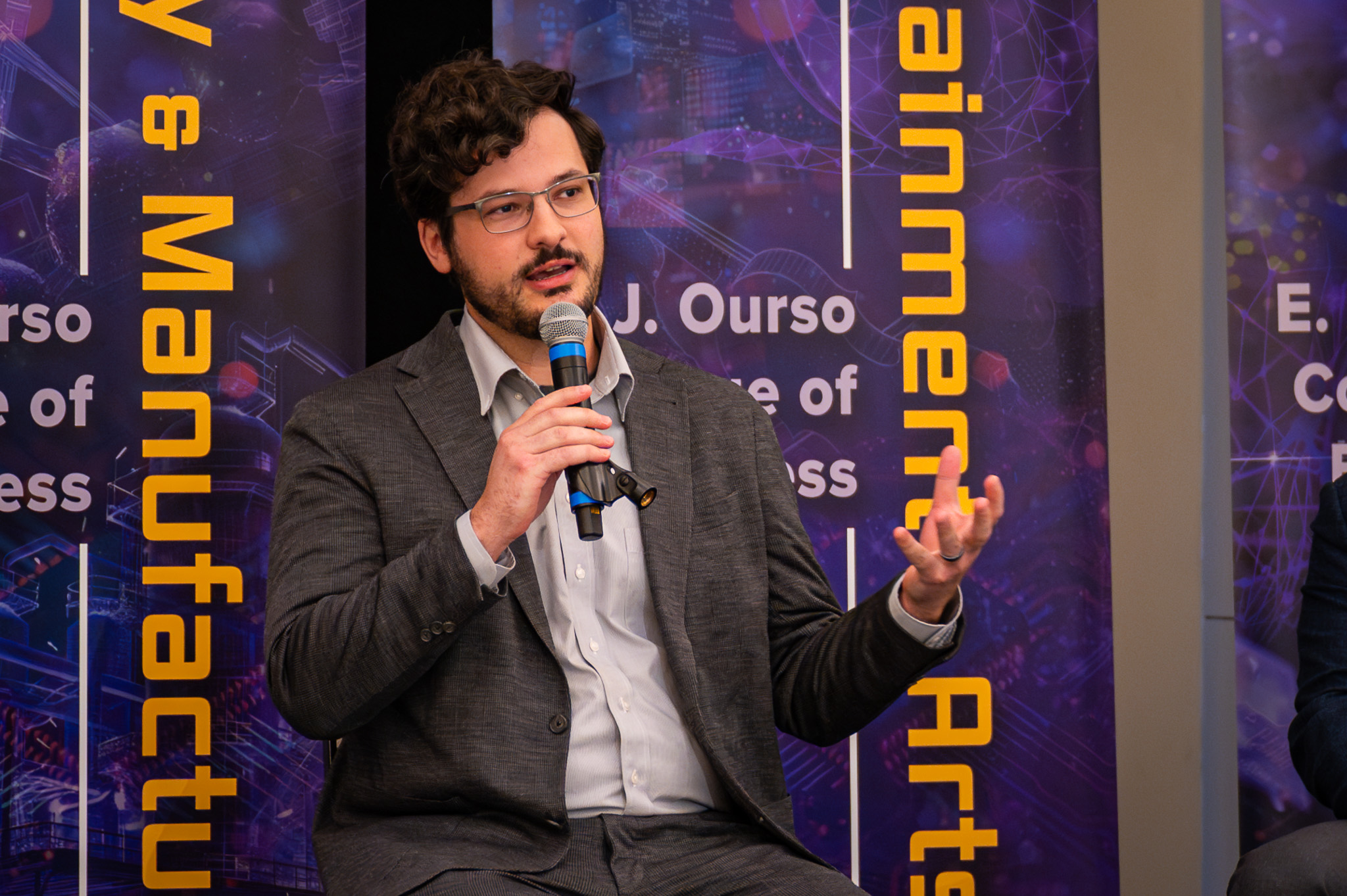
"I think the number one risk [of using artificial intelligence] is giving it to your organization without educating them about what it is. It's the lack of literacy."
James Ghawaly
Assistant Professor, LSU College of Engineering
Special Advisor to the Provost on Machine Learning
Innovation in Creativity
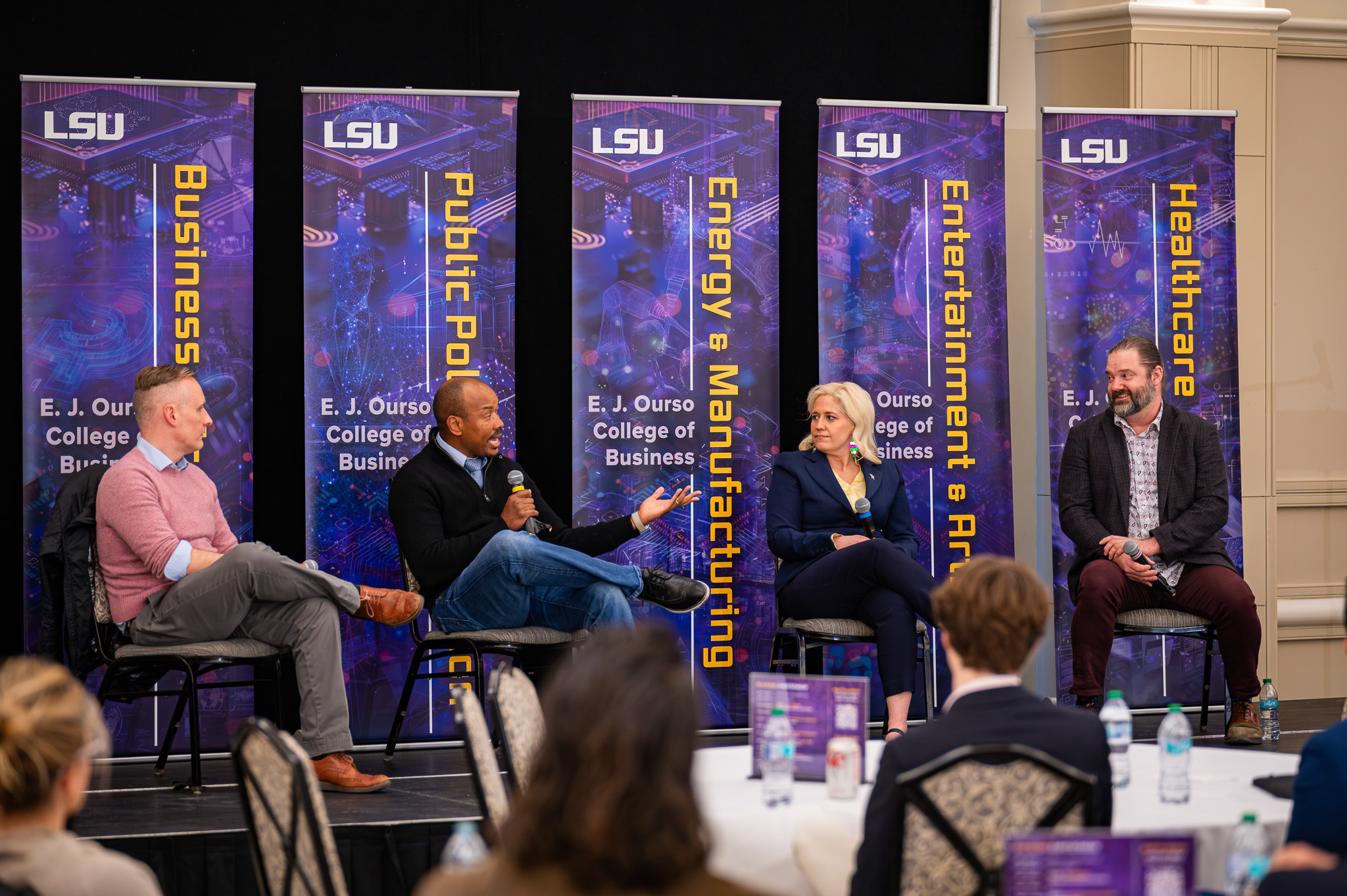
The symposium's fourth panel explored AI's effects on arts and entertainment industries with panelists Marcus Lyle Brown (Believe Entertainment), Simonette Berry (IATSE Local 478), and Jesse Allison (LSU College of Music & Dramatic Arts), with Jason Jamerson (LSU XR Studio & LSU School of Art + Design) serving as moderator.
Within the panel, there was agreement that conversation regarding AI in the arts is currently dominated by both curiosity and fear, particularly concerning job security and intellectual property rights. Professor Allison remarked, "I would say that the two biggest things are ... what can I do with [AI]? And, as an artist, will my stuff get stolen? Will somebody else just start automatically generating things that replace me, right? There's some fearmongering kind of happening, but there's also some legitimate issues about voice actors having their voice copied and then just generated."
Marcus Lyle Brown, who has been a member of the Screen Actors Guild for over 20 years and has also served in numerous production roles, advocated for a balanced approach. "I look at this from a number of different perspectives, but I do embrace [AI] immediately as a tool, like most things that we utilize. Of course, there are some ethical things that we need to be mindful of. Of course, there's some ownership issues. But as long as we do so from an ethical standpoint, we're mindful of the impact of that tool. Just like in a scene shop, you've got, you know, safety equipment. You've got protocols in that scenario to make sure that individuals do not hurt themselves. As long as we set those guard rails in place, we see it as a tool. We want to embrace it and help us accelerate our processes, minimize our budget, maximize the impact of what individuals see as the content that we're creating."
The panel agreed that evolution and adaptation would be key to navigating this complex relationship with this new technology. Simonette Berry, representing the International Alliance of Theatrical Stage Employees (IATSE), remained optimistic, noting: "IATSE's been around for 130 years. We've been around through silent films going to talkies. We've been around through black and white television going to color television. We've been around through the genesis of the visual effects and CGI Renaissance. You know, we do not dig our heels in when it comes to technology. We know we have to roll with the punches and continue to educate ourselves in order to remain relevant."
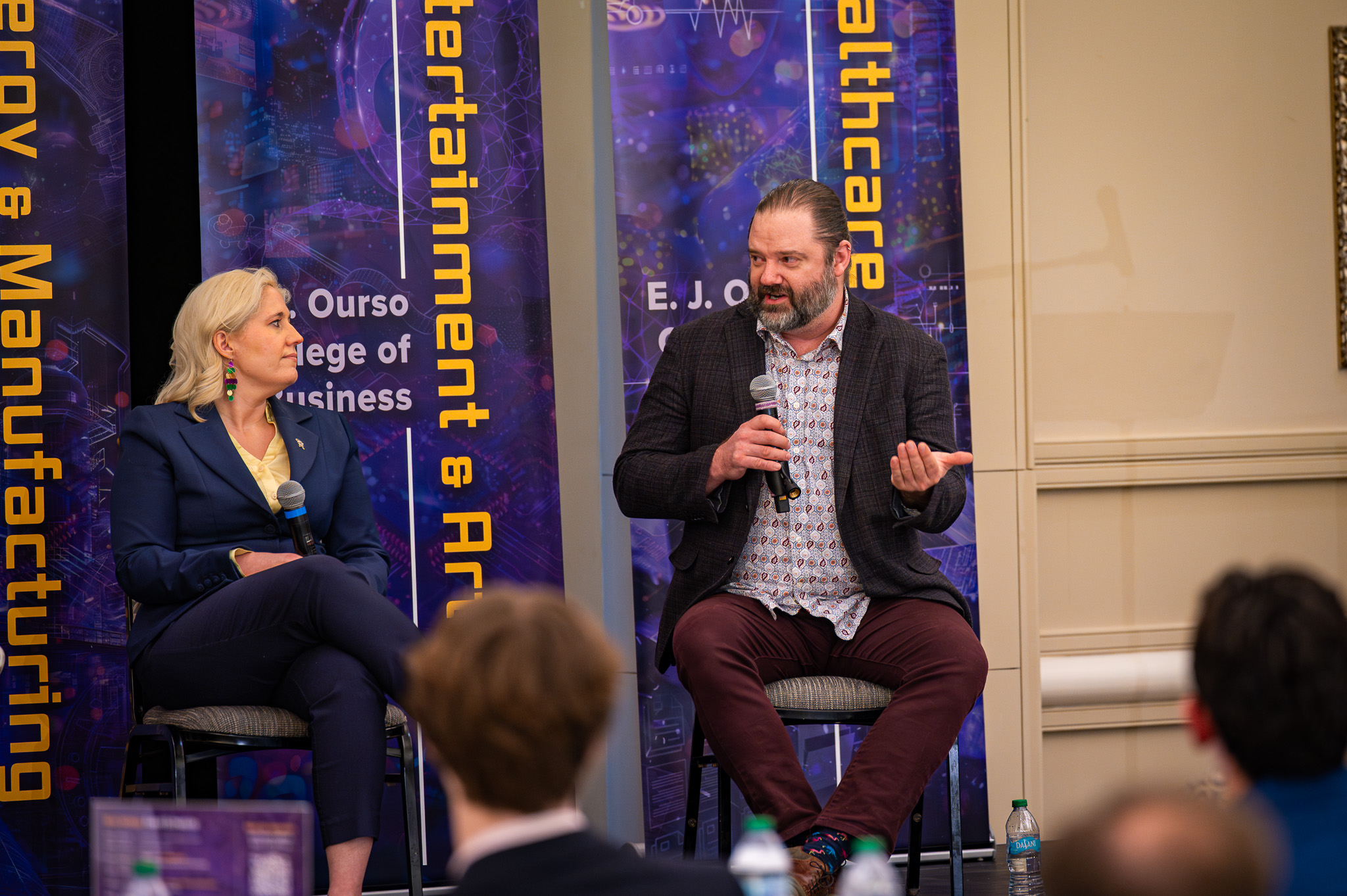
"One of the things that's so interesting about new technology when it hits is the first thing that people try to do with it is something that has already been done ... I'm really excited about when we stop trying to duplicate and then we start trying to make [new] AI art."
Jesse Allison
Associate Professor, Experimental Music & Digital Media
LSU College of Music & Dramatic Arts
Improving Healthcare Outcomes & Efficiency
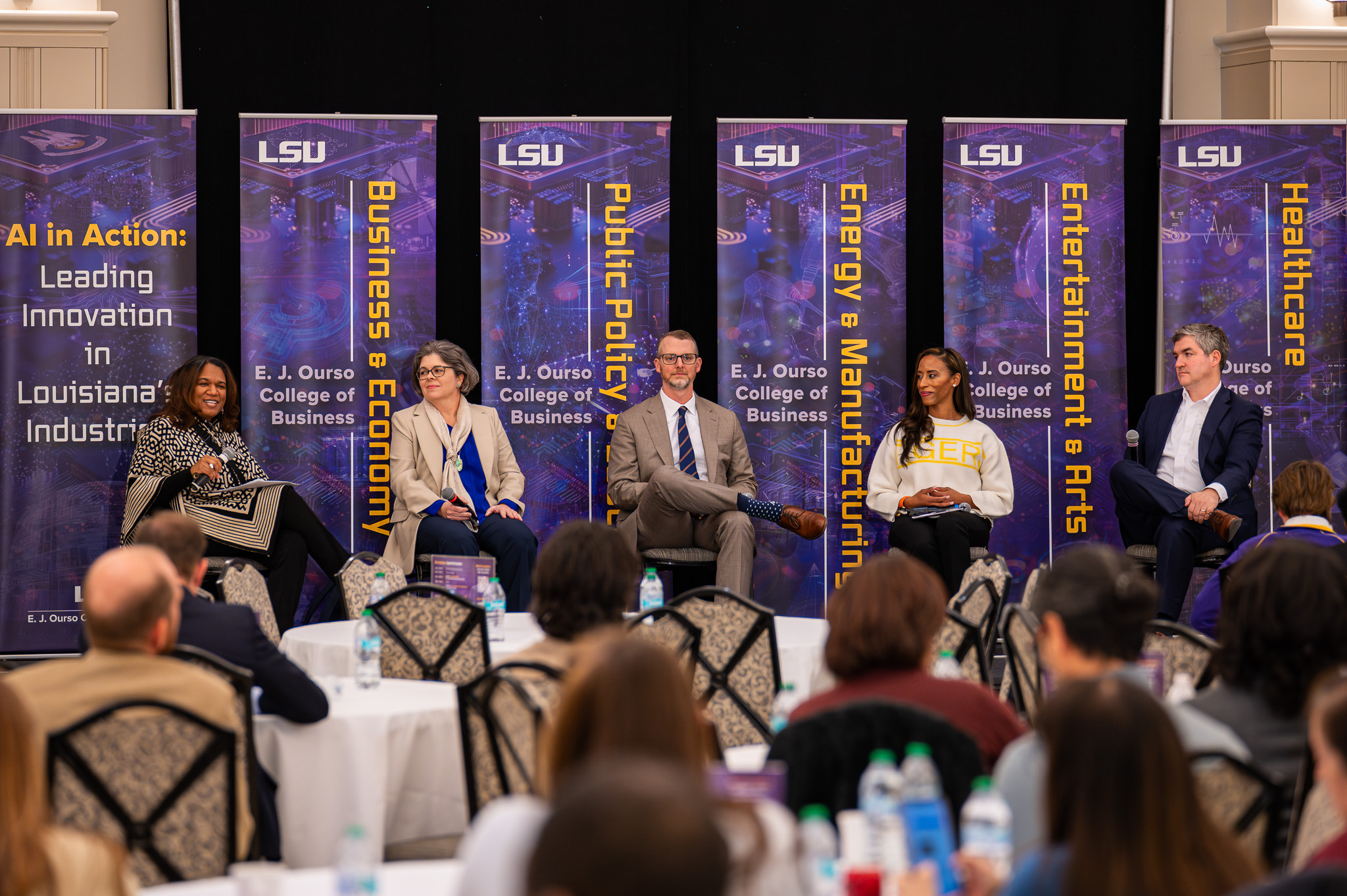
The final panel of the day examined AI's effects on healthcare with panelists Tonya Jagneaux (Our Lady of the Lake), Jonas Fontenot (Mary Bird Perkins Cancer Center), Whitney Breaux (Eli Lilly and Company), and Will Landry (Franciscan Missionaries of Our Lady Health System) with Courtney Phillips (LSU System) serving as moderator.
Similar to the opinions expressed in earlier panels, the healthcare professionals spoke to how AI is already expediting treatment planning and development. Dr. Fontenot shared an example from radiation therapy planning, with AI compressing a week’s-long process into minutes. "We have implemented it to compress that process into about ... a 15 to 20-minute session such that we can, on the fly every day that a patient shows up for treatment, come up and create a completely unique plan of the day when they've arrived for care." Whitney Breaux added to this in the pharmaceutical context, noting AI's role in speeding up clinical trials: "If we're able to speed enrollment [by reducing overhead] then we're able to move through the drug development process obviously a lot more quickly."
Later in the panel, while addressing some audience questions, the panel's focus turned to the potential of AI to address healthcare disparities in Louisiana. Both Will Landry and Dr. Jagneaux noted how AI could help identify social determinants of chronic health issues: "What we need is, hey, if we targeted this area because we recognize a lot of folks with heart failure are readmitted from this area," Jagneaux said, "They are in a food desert; their access to care is poor." Dr. Fontenot suggested AI as a tool to extend specialized medical expertise beyond major urban centers. "I also see an opportunity for AI to be able to extend the unique and scarce programs or resources that exist in large integrated health systems, academic health programs ... to be able to scale out from the FMOLs, the Ochsners, the MD Andersons, the Mary Bird Perkins of the world and make them more easily accessible throughout communities that have traditionally suffered from a lack of access to those high-quality tools."

"I think it's hard to separate efficiency and timing [from] quality. They are interwoven because of the speed and the ability to wrap your hands around all the complexity that goes with [healthcare] and the ability for AI to tackle both of those questions simultaneously."
Dr. Tonya Jagneaux
Chief Medical Informatics Officer
Our Lady of the Lake Medical Center